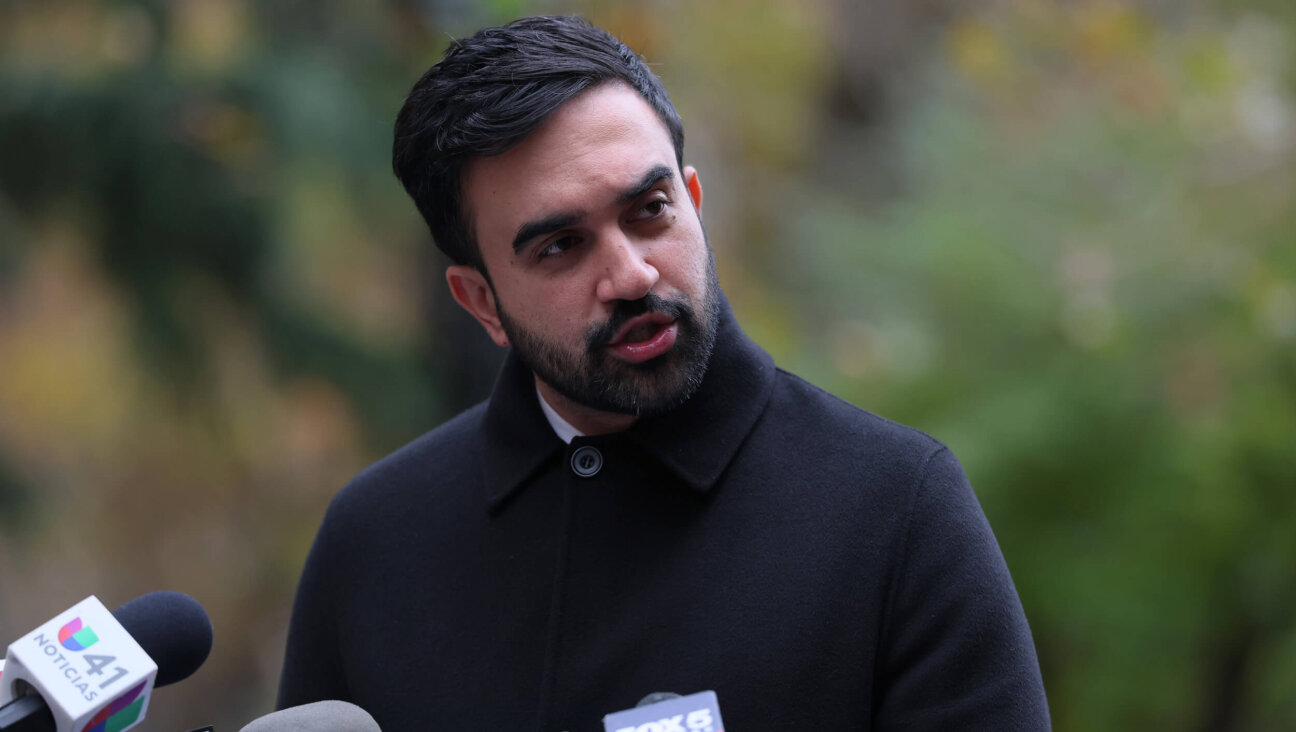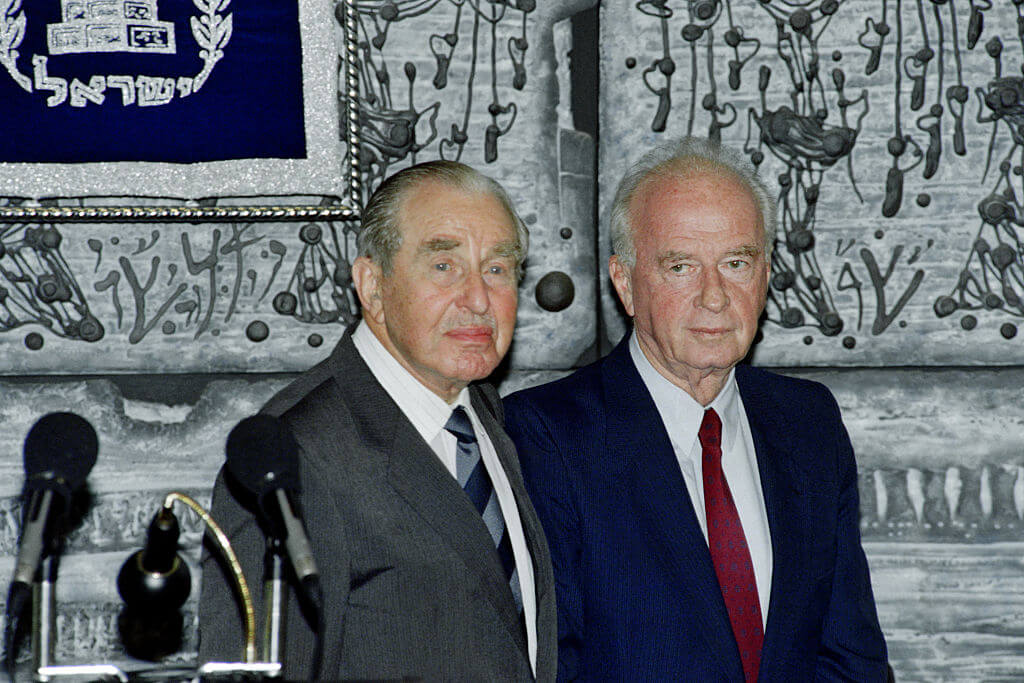Conservatives Taking a Page From Orthodox Prayer Book
Spurred in large part by the growing popularity of an Orthodox publisher, leaders of Conservative Judaism are set to release the movement’s first prayer book with extensive built-in commentary.
Movement rabbis acknowledge that a main impetus for commissioning the new commentary, titled “Or Hadash” and set to be released April 15, was the growing phenomenon of Conservative worshipers using the popular Orthodox prayer book put out by ArtScroll/Mesorah Publications. The trend certainly irked many Conservative leaders, who concluded that the increasing popularity of ArtScroll was not a function of its ideological bent, but the desire of many Conservative congregants to have a prayer book that offered them more than a flowery translation of the Hebrew text.
The new 750-page Sabbath and festival prayer book, published by the Rabbinical Assembly and the United Synagogue of Conservative Judaism, comes just 18 months after the release of “Etz Hayim,” the movement’s groundbreaking Bible commentary. Taken as a package, the two works go a long way toward ending the movement’s decades-long struggle to provide congregants with a clear theological blueprint of what Conservative Judaism stands for.
“I’ve been using ArtScroll for about 12 years,” said Steven Rothman, a third-generation Conservative Jew and a member of the ritual committee at Temple Beth Zion-Beth Israel in Philadelphia. “I wanted something with commentary. But the problem with some of their commentary is that it is coming from a strictly Orthodox point of view. I would like to see commentary from a Conservative point of view.”
Rothman told the Forward that he is excited about the upcoming release of “Or Hadash.” Along with “Etz Hayim,” he said, the prayer book represented a newfound, and long-needed, willingness on the part of Conservative movement leaders to tend to the intellectual and liturgical needs of their followers. “They are finally answering some of the questions about what it means to be a Conservative Jew,” Rothman said. “I’m very pleased that the Conservative movement is opening itself up intellectually to the lay person. That’s not always the way it was before.”
In the case of “Etz Hayim,” the Rabbinical Assembly and United Synagogue were attempting to end a glaring, half-century-old ideological contradiction: Though the movement has long embraced the view that the Pentateuch is a divinely inspired document composed over centuries, Conservative congregations have historically used the famed commentary of late Rabbi J.H. Hertz, a work marked by its spirited defense of the competing theory that the Torah was given by God to Moses.
In contrast, observers say, the movement’s existing “Siddur Sim Shalom” prayer book is in tune with Conservative theology, but fails to meet the need of a growing number of worshippers for a comprehensive liturgical commentary. The need is so urgent, in fact, that many pulpit rabbis reported that an increasing number of congregants were showing up to synagogue with the popular ArtScroll prayer book, though its unabashedly Orthodox commentary often flies in the face of Conservative doctrine.
“It’s clear that many congregants have been complaining to us for a long time that they have felt a real lack of ability to grab hold of a lot of the prayers,” said Rabbi Jerome Epstein, executive vice president of United Synagogue, the movement’s congregational arm. “Some have felt that the ArtScroll really provided them with information that they needed. But its approach doesn’t represent what we are or what we stand for.”
Officials at the Brooklyn-based ArtScroll publishing company say that since its release in 1984, their prayer book has sold about 800,000 copies, including subsequent versions and editions, though no breakdown was available to gage the interest of non-Orthodox Jews. But observers generally agree that the ArtScroll prayer book is a popular choice among beginner- and intermediate-level worshippers, thanks in part to its lucid translation, but primarily because of its detailed instructions and comprehensive commentary.
To produce a Conservative alternative, the Rabbinical Assembly and United Synagogue turned to Rabbi Reuven Hammer about seven years ago. A Syracuse native, Hammer has written well-respected works on Jewish liturgy. He immigrated to Israel three decades ago after serving as a pulpit rabbi in Chicago, and last year became the first Israeli to assume the presidency of the Rabbinical Assembly.
Judging from a pre-publication copy of “Or Hadash” — meaning “a new light” in Hebrew — Hammer appears to have succeeded in producing a commentary that rivals ArtScroll in its lucidity and comprehensiveness. While relying on a range of biblical and ancient rabbinic sources that one would find in an Orthodox work, Hammer also weaves in insights from Conservative figures and other modern-day luminaries, giving the work a distinct theological flavor.
“I think it is incredible,” said Rabbi Jeffrey Hoffman, who teaches a liturgy class at the Jewish Theological Seminary and is the religious leader of Congregation Sons of Israel in Nyack, N.Y. “You literally have a smorgasbord of fascinating commentaries on every prayer. What I love is the diversity of the types of interpretations offered. You have theology and philosophy. You have history. You have literary notes.”
Hoffman has already used passages from the new commentary in his class at JTS. Epstein said that the Rabbinical Assembly and United Synagogue are expecting many of the movement’s 800 synagogues to order a few dozen copies to be used in teen and adult education classes, but not necessarily to replace their full collection of “Siddur Sim Shalom” prayer books.
Like the new Bible commentary, “Or Hadash” manages to reflect the movement’s understanding of Judaism as an ever-evolving religion with sacred documents developed over centuries, while still communicating a deep reverence for ancient texts and rabbinic scholars. The layout in “Or Hadash” resembles that of the Talmud, with the Hebrew text and English translation from “Siddur Sim Shalom” flanked by various commentaries, some by Hammer and others culled from a wide range of sources.
“Or Hadash” works well as a companion to “Siddur Sim Shalom,” by addressing what some movement insiders see as a key flaw in Rabbi Jules Harlow’s otherwise popular 1985 translation. Rather than change the wording of some traditional Hebrew prayers that violate the theological sensibilities of Conservative Jews, Harlow often used a slightly altered, inexact, English translation.
Not surprisingly, in a movement that prides itself on rigorous academic analysis of texts, this approach has caused discomfort in some circles. Hammer’s commentary rectifies the situation by often providing the exact translation, insight into how the passage in question was originally understood and alternative understandings that might appeal to contemporary Jews.
“The purpose of a translation and the purpose of the commentary are quite different and often mutually exclusive,” Hammer writes in his preface. “One might say that while both the translator and the commentator want to clarify the text, the translator wants to present all the complexities that are contained in the text, even while offering an explanation that is acceptable to today’s mindset.”















